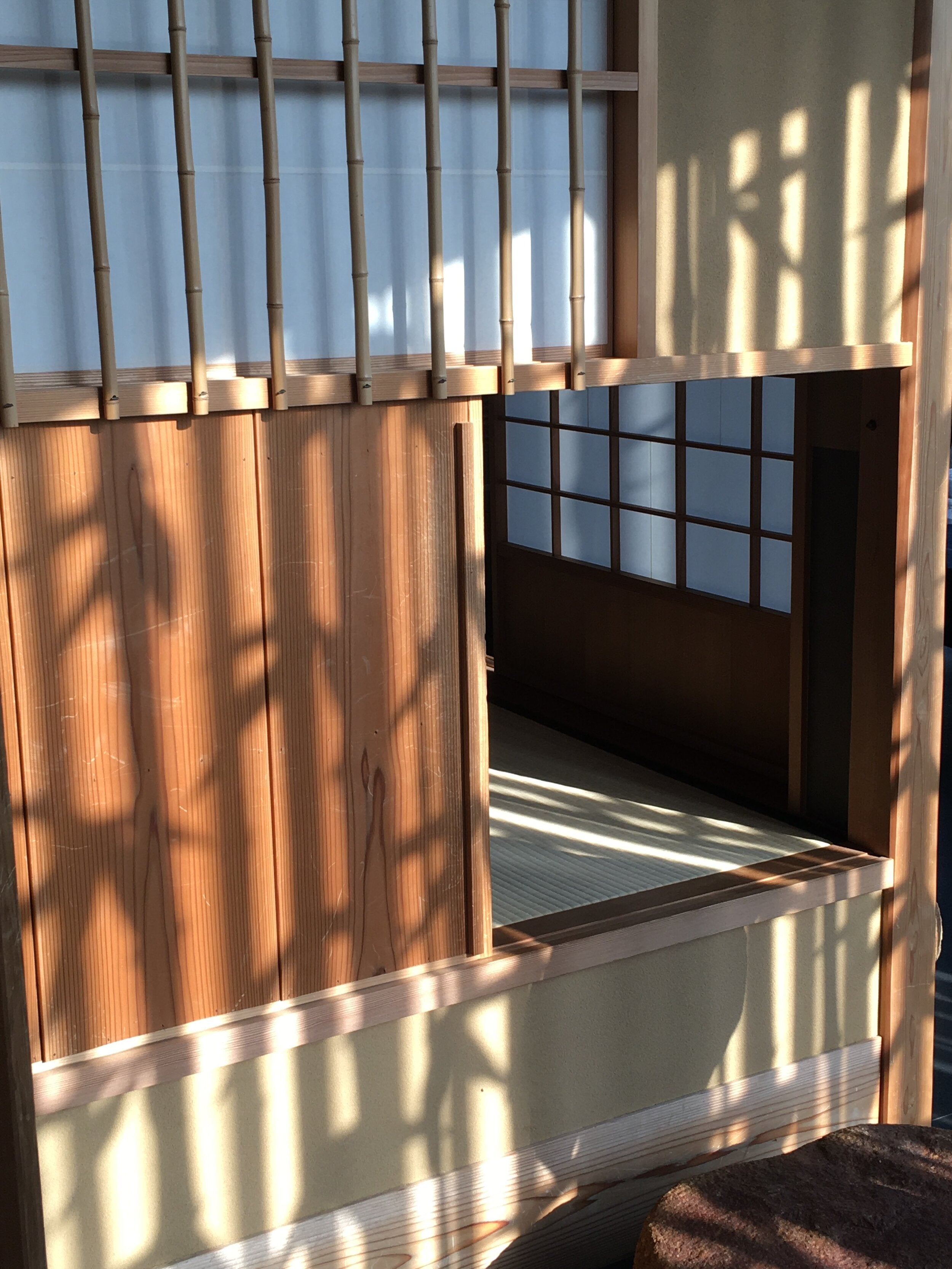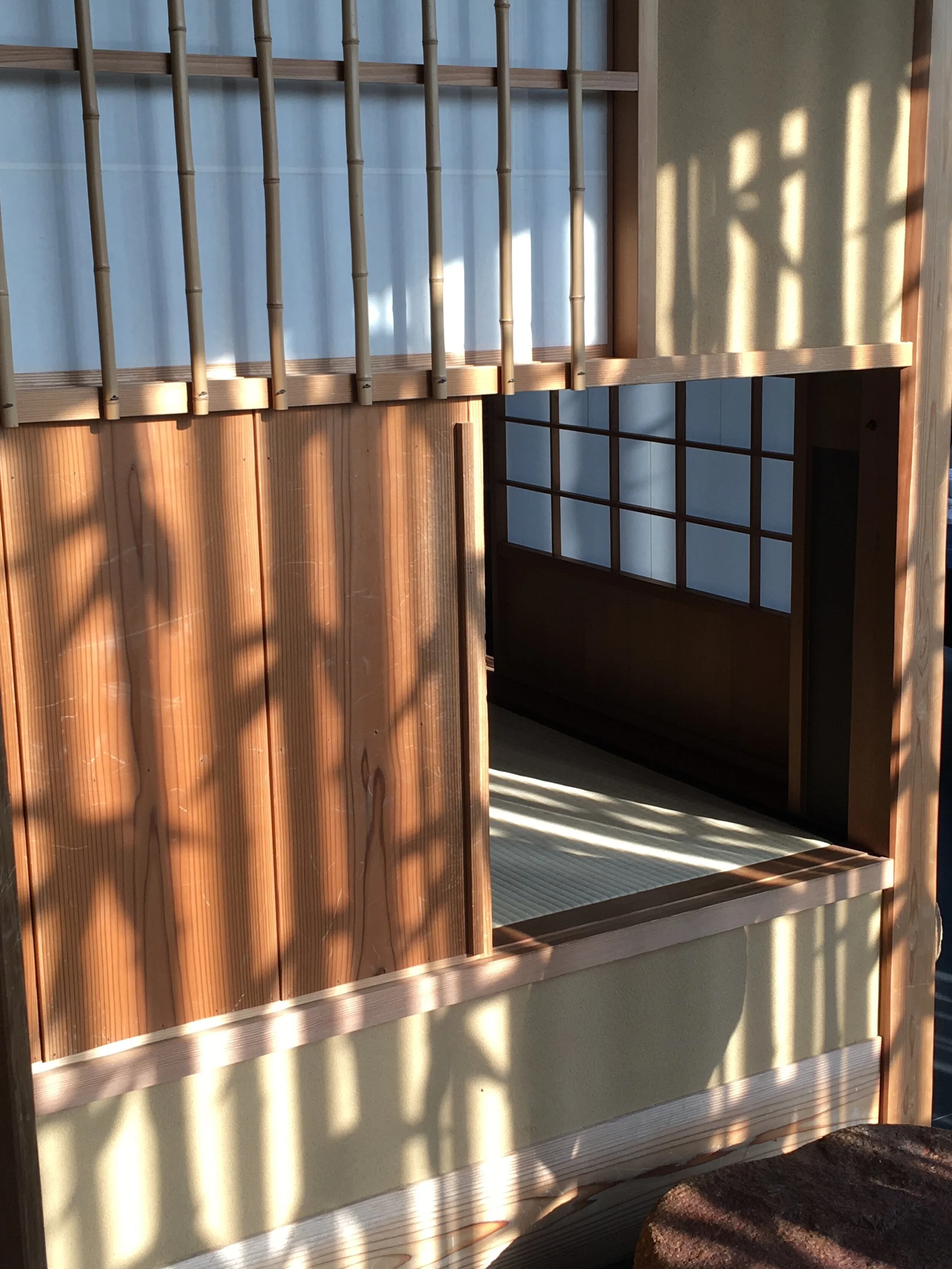I have been practicing the Japanese tea ceremony for over 25 years now, and it has become a central part of my life. For me, at its heart the tea ceremony is about meditation and a way towards self-realization.
Japanese monks started to practice the tea ceremony in Kyoto as long ago as the 15th century. And 600 years later, monks are still practicing the tea ceremony in Japan as part of their search for self-knowledge.
In the 16th Century, the Japanese tea ceremony was transformed from being part of Zen ritual to a comprehensive art, by the great tea master Sen no Rikyu, who created the core elements of today’s Japanese tea ceremony.
A key part of the philosophy is that, in the tea room, we use all our five senses to enjoy a cup of tea. Touching the bamboo whisk, spoon, and ceramics; smelling the matcha tea and the incense from the burning charcoal; seeing all the decoration and colours; listening to the noise of the steaming iron pot; and tasting sweets and the cup of matcha tea. These together have a harmony within the wabi sabi idea, and are all bound into the harmonies of nature.
When a host prepares to invite guests to a tea ceremony, they might suggest a particular theme for that ceremony. The theme could be seasonal flowers, plants in the garden, special ceramics, calligraphy, or poems that might be shared with the guests. The tea ceremony is also considered a great social activity, similar to inviting people to a dinner party.
A unique thing about the Japanese tea ceremony is that all arriving guests have to enter through a small entrance to join the tea party.
The entrance is uncomfortably small - 66 x 63cm (26 x 25 inch). The idea of having such a small entrance was set down by Sen no Rikyu, originally for two main reasons -
1. It meant that all Samurais had to take off their swords to enter the tea room.
2. Everyone had to bow when entering the tea room.
This obliged everyone who came to the tea room to be on the same equal footing, no matter what their social position or wealth. So that everyone should be equally able to enjoy the conversation about art and crafts, to appreciate nature and the seasons, and to savour the cup of matcha tea and the peace of the tea room.
Rikyu was to have a major influence on Japanese taste and high society in the 16th century, and became renowned as a great designer, art collector and art critic, gaining a significant following amongst high ranking Samurais, who followed his taste and advice when developing their own collections. Rikyu himself originally came from a modest merchant family in Osaka and rose quickly through the social strata_ one of the reasons, perhaps, why he was so insistent on having such equality in the tearoom.
In the 21st century, we now live in many divided societies, with many inequalities, which is another good reason why we should be practicing the Japanese tea ceremony today. So I hereby invite all politicians and billionaires to come to my tea ceremony workshop!


